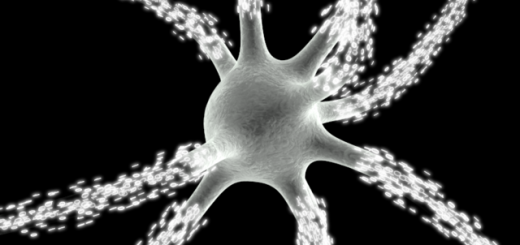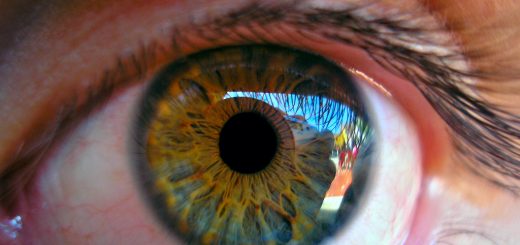The Psycho-Social Impact of Facial Reconstructive Surgery
Clare Allely faces up to what it means to have a new face.
‘There’s a hesitation from my part, thinking that I would be wearing another face that did not belong to me. But when I look at it logically…here I am, with this hole in my head, and if I thought I could be made whole…then I would go for it.’ Christine Piff.1
The face is a ‘vital component of one’s personality and body image’2. Although controversial, facial transplantation is proposed as a significant advance in facial reconstructive surgery3. With the first face transplants (performed in France in 2005 and China in 2006) advances in surgical techniques and immunosuppressant drugs have turned what was once the makings of a Hollywood film into a medical reality. French surgeons performed the first partial facial transplant, using the nose, lips and chin from a brain-dead living donor to reconstruct the face of a 38-year-old woman who had been mauled by a dog. As this first patient demonstrated, facial transplantation can be used to alleviate functional impairment, for example where burns contractures prevent mouth opening or other facial movement, where the eyelids have been lost (leading to corneal ulceration and blindness) or where there is a loss of nose or ears. The final appearance is likely to be a composite of the donor and the recipient face as well as some superficial donor characteristics such as eyebrows4.
Perhaps the last hurdles to performing this operation routinely are psychological and social in character. The importance of the psychosocial impact of an allograft (where tissue is transplanted from one person to another, but not an identical twin) was driven home by the outcome of the first human hand transplant performed in Lyon, France in 1998. The recipient had a number of psychological problems that were likely associated with his eventual noncompliance with immunosuppression medications. The patient’s decision to cease taking these drugs resulted in tissue rejection and subsequent amputation. As with all transplants, suppression of the body’s normal immune response is critical, and skin grafts are especially susceptible to rejection. Patients must take medications daily for the rest of their lives but compliance with such a regimen is daunting and not all patients succeed. Important risks are associated with the use of immunosuppressive agents, including diabetes, renal disease, infection and malignancy.
The key area of debate is whether the benefit of this facial transplant procedure to someone with severe facial deformity – in terms of improvement of function, aesthetics, and psychology – outweighs the risk of long term immunosuppression and the psychological problems of altered appearance. Some researchers have stated that, although the psychological impact of facial transplantation will not be understood until several procedures have been carried out, some of the psychological issues likely to arise with particular reference to body image can be predicted.
The Early Post-Operative Period
Experience with hand transplantation, another highly visible form of allograft, has shown that the immediate post-operative period can be extremely difficult psychologically. Effects include neglect (being unable to look at the graft, even turning the head away in sleep), troubling dreams and hallucinations of flying disembodied hands, unexplained somatic symptoms in the hand and elsewhere, delusions (that the hands were in fact the patient’s own, re-planted), anxiety, depression, agitation, horror and psychosis[lref id=5]. The degree to which these psychological problems are likely to present themselves after facial transplantation is unknown, but for this reason the selection process includes major emphasis on, and preparation for, disruption in facial recognition5. However, a facial transplant is not the same as a hand transplant; only the skin is involved, and the graft is not directly visible to the patient. Thus, a facial graft may prove less traumatic in the early stages. Meticulous pain control is also important, since pain may contribute to re-awakening of the original trauma.
Immediately following the operation to implant the allograft, the patient is likely to be under intensive care for at least 24 hours and remain heavily sedated for another 24 hours. In order to protect the airway and reduce movement of the graft, a tracheostomy and feeding tube will be in situ, and the graft, which will be swollen early on, will be covered to keep it warm. As a result, the patient will be incapable of speech or facial movement, although the eyes will remain uncovered. This creates difficulties in allowing the patient to take early steps to assess their new appearance and understand how their appearance is changing in order to integrate it into their internalised body image. It is also likely to reawaken memories of the original trauma.
Avoidance
Avoidance (of looking at or interacting with the graft) has been identified in the hand transplant
populations as a powerful factor preventing integration of the graft into the patient’s body image. The face is strongly associated with individual personality and there are likely to be strong feelings of depersonalisation when one’s own face is replaced by another. The feeling of detachment may be exacerbated by the fact that the graft is unlikely to gain motor or sensory capability for many months. A feeling of ‘not the real me’ can also paradoxically develop from the loss of the old disfigured body image, even when that transformation has been greatly anticipated and is objectively successful. The result of this may be that the patient avoids the emotional stress brought on by looking at or touching the graft by simply refusing to acknowledge it.
Cognitive-behaviour therapy (CBT) measures such as graded exposure and looking in the mirror and encouraging the ‘use’ of the face (applying make-up, shaving, managing scars and other self-care activities which involve interacting with the graft such as the use of topical immunosuppressant preparations) can be effective in reducing psychological problems. Other measures to alleviate avoidance behaviour focuses on reinforcing information that the graft is part of the patient’s own body. Physiological measures, particularly functional magnetic resonance imaging (fMRI) scanning, depicting changing activity in the motor cortex as the graft recovers movement, have been highly effective in promoting acceptance of hand grafts by ‘proving’ to the patient that there is an interaction between their brain and the new graft. A technique shown to improve early re-modelling of the motor cortex in response to the new graft (as evidenced by fMRI) has been the use of a ‘sensor glove’ which transformed tactile feedback (which at that stage could not be perceived by the patient) to auditory feedback via earphones6; this is likely to have benefits for psychological as well as physiological integration of the graft and could be adapted for use on the face.
Anxiety and Low Mood
Patients who have suffered facial trauma also report higher rates of somatoform symptoms, substance abuse, post-traumatic stress disorder symptoms, body image issues, increased stigmatisation as a result of facial deformities, lower quality of life and lower overall satisfaction with life7. Somatoform symptoms are suggestive of a general medical condition. However, there are no diagnosable bases to the suggestive medical condition(s), which arise through no intention of the sufferer. During the months following facial transplantation, anxiety is likely to result from many stressors present around the patient. These could include unwanted media intrusion, reactivation of post-traumatic symptoms, family difficulties, fears about the future and any other body image issues likely to be raised by facial transplantation. An especially salient fear across all transplant populations, is that of graft rejection. Anxiety may also result from fear of potential or actual side effects of the immunosuppressive medication, which may lead to non-compliance with the regime, with potentially disastrous consequences. The stress of the procedure, post-operative regime, pain and temporarily enforced social isolation are risk factors for low mood. Also common in transplant populations is a sense of guilt or responsibility for the donor. However, low mood should not be confused with clinical depression where the individual meets the criteria for a ‘Diagnostic and Statistical Manual of Mental Disorders’ (DSM-IV) diagnosis.
Issues of Identity and Communication
With facial transplantation, the idea of ‘taking on a different identity’ rather than simply adopting a change in one’s own appearance is potentially deeply disturbing for both the potential recipients and the donor’s family. Faces help us understand who we are and where we come from, in essence, represent our identity. Individuals who have suffered disfiguring facial injuries report that the resolution as well as the recognition of the new face as their own takes a very long time8. Even after the face they see in the mirror ceases to produce a startled response, a startle response continues to occur with the unexpected presentation of themselves in, for instance, a shop window. Additionally, some individuals often worry that the donor’s identity will be transferred to the recipient through facial transplantation. Clarke and Butler investigated this by modelling the change in appearance, using laser scanning and photography. They found that such transfer does not occur after facial transplantation. Similarly, Concar showed, using modelling that the image of the person after facial transplantation, while retaining some of the superficial characteristics of the donor, (e.g., facial hair) produces a ‘third’ face with its own identity.
Post-operatively, communication without facial expression is required as it takes several months for the allograft to function fully. Such a delay in function may increase the psychological impact of the post-operative period, although some of these patients may have already developed new communication strategies following their initial injury9. These communication difficulties will potentially make it more difficult to articulate needs and problems and will also make assessment of mood and mental state more challenging. To prevent the patient becoming self-focussed and withdrawing from interaction with others, it is important to encourage communication with those around the patient by, for example, keeping a daily log of their activities and completing daily a ‘mood thermometer’ assessment.
Body Image, Sensation and Shame
Face transplantation could prove important in understanding more about the cortical processes that underpin facial identity and the relationship to altered sensation. While adapting to a new face has been framed in terms of gradually adjusting to a new appearance, it is equally important to consider how closely this might be linked to the alteration and development of sensation. Facial phantom pain as opposed to altered sensation has been infrequently reported in partial facial transplant clinical population. Where it has occurred, it is associated with size distortion and an unpleasant affective component to the agnosia, with distressed patients describing their face as ‘alien’ or ‘foreign’10. Agnosia is demonstrated by an impairment in the ability to recognise or identify familiar objects, entities or people typically as a result of a neurological deficit or disorder. Veale11 found that patients diagnosed with body dysmorphic disorder commonly describe an urge to ‘surgically remove’ the part of their body which causes such intense distress, often using the same kind of emotive vocabulary, such as ‘alien’. For those involved in the day to day management of a patient after face transplant, the evidence that body parts construed as foreign may generate such a profound emotional response is a very important determinant of how patients are both prepared and managed postoperatively.
An individual’s negative feelings about their appearance can result in internal shame which may subsequently produce feelings of disgust and self-loathing. The ‘Frankenstein’ aspect identified in the hand transplant patients, particularly early on when the scar demarcation between donor and recipient skin is very obvious, is likely to apply strongly to the face transplant patients. It may arouse feelings of disgust directed against the graft itself, which is exacerbated by the knowledge of the cadaveric nature of the graft. External shame, on the other hand, refers to one’s perception of being viewed negatively by others producing the expectation that others will not want to interact with them positively. This is commonly reported after disfigurement and also results from internal shame and negative body image. For most patients with any kind of facial disfigurement, the biggest psychosocial difficulties lie in learning to cope with the social response to their facial appearance. For many individuals, these constant social challenges inevitably lead to social withdrawal.
Conclusion
Facial transplantation can have a significant psychological impact including altered body image, anxiety, shame, low mood, communication and behavioural avoidance. Not only does facial transplantation present as a surgical intervention requiring a high degree of patient care, it will almost certainly result in a variety of unique and complex psychological issues. Future cases will provide the evidence-base to fully scope the psychological issues and enable the development of specific psychological treatments.
References
- Furness, P.J. Facing the future. 2003. The Psychologist, 16 (10), 538-540
- De Sousa, A. Psychological issues in acquired facial trauma. 2010. Indian Journal of Plastic Surgery, 43, 200-205.
- Brill, S.E, Clarke, A, Veale, D.M, Butler, P.E.M. Psychological management and body image issues in facial transplantation. 2006. Body Image, 3, 1-15.
- Clarke, A, Butler, P.E.M. Face transplantation: Adding to the reconstructive options after severe facial injury and disease. 2005. Expert Opinion in Biological Therapy, 5, 1–8.
- Clarke, A, Butler, P.E.M. (). Face transplantation: Psychological assessment and preparation for surgery. 2004. Psychology, Health & Medicine, 9, 315–326.
- Lanzetta, M., Perani, D., Anchisi, D., Rosen, B., Danna, M., Scifo, P., et al. Early use of artificial sensitivity in hand transplantation. 2004. Scandinavian Journal of Plastic and Reconstructive Surgery and Hand Surgery, 38, 106–111.
- Shepherd, J.P. Strategies for the study of the long term sequelae of oral and facial injuries. 1992. Journal of Oral and Maxillofacial Surgery, 50, 390–399.
- Macgregor, F.C. Facial disfigurement: Problems and management of social interaction and implications for mental health. 1990. Aesthetic Plastic Surgery, 14, 249–257
- Clarke, A. Psychosocial aspects of facial disfigurement: Problems, management and the role of a lay-led organisation. 1999. Psychology, Health and Medicine, 4, 127–142
- Sacks, O. Phantom faces. 1992. British Medical Journal, 304, 364
- Veale, D. Advances in a cognitive behavioural model of body dysmorphic disorder. 2004. Body Image, 1, 113–125.











Very interesting article. Facial Feminization Surgery is aswell a new kind of technique that is being improved in order to provide support to anyone that would like not only to reconstruct their face, but to enjoy having an appeareance that fits with their feelings.
Regards, Garret.